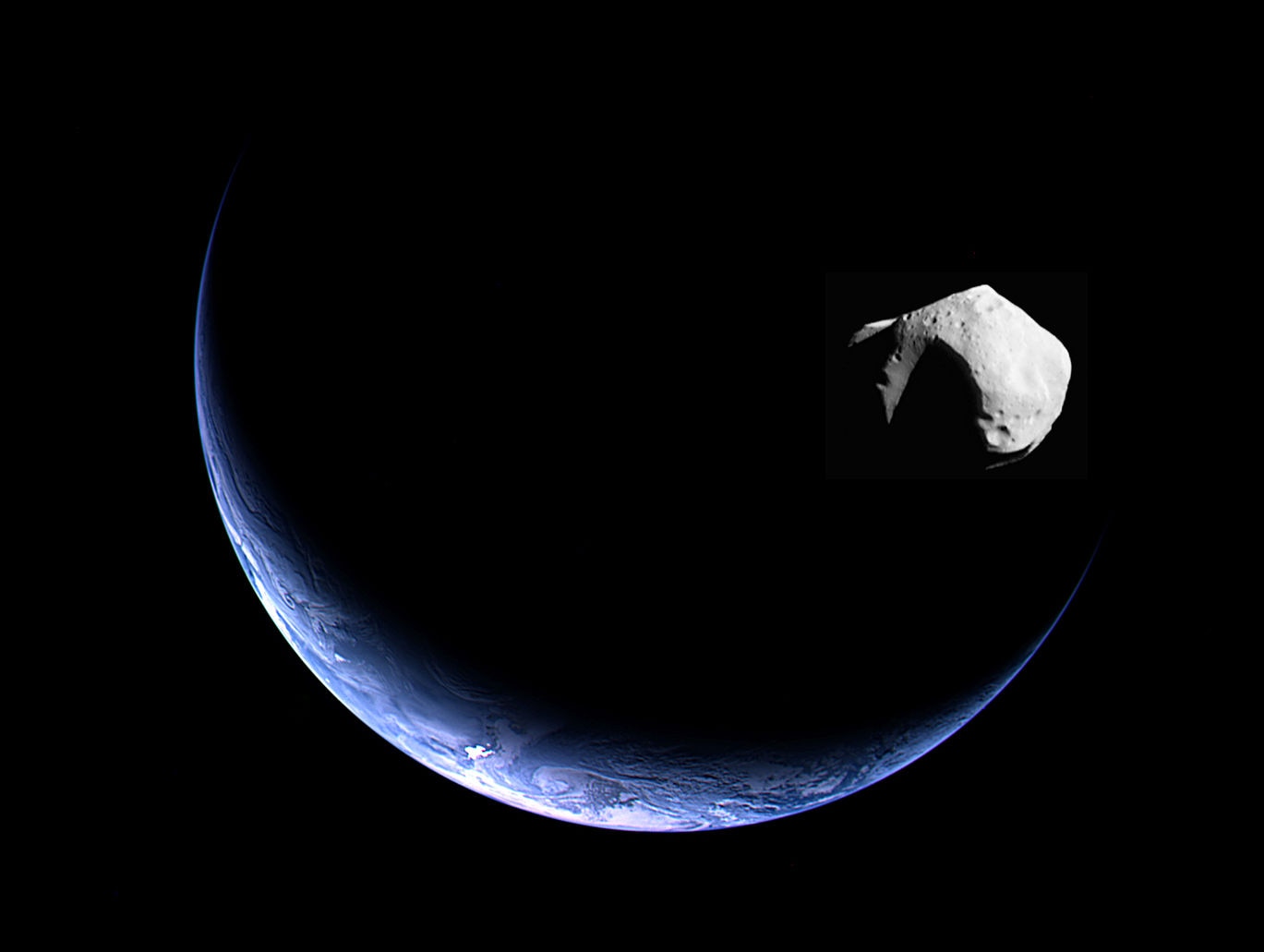Create a free profile to get unlimited access to exclusive videos, sweepstakes, and more!
No, we're not in any danger from an asteroid passing Earth on Saturday night

Here's a headline you won't see in the tabloids: "On Saturday night, an asteroid will safely pass by the Earth. No need to fret."
Oh, how I wish. Not only would it be accurate, it wouldn't needlessly worry people. That's a planet I'd like to live on.
Instead, we see headlines like this:
Blarg. Note this is the same rag that breathlessly exclaimed that NASA found a parallel Universe where time runs backward, if you want to know how seriously they take, y'know, accuracy.
Or this one, from the New York Post:
Double blarg. I'm not even sure what that one means. "May" zoom past Earth? Has it not yet made up its mind? Those fickle space rocks!
Other such articles can be found, each more spittle-flecked than the last. I swear, sometimes I think the most danger I'm in from asteroids is the headache I get from pounding my forehead against my desk.
So what's the deal here?
The asteroid is called 163348 (2002 NN4); I'll call it NN4 for short. It's actually a rather interesting rock; it's what's called an Aten asteroid, meaning most of its orbit is closer to the Sun than the Earth, but is elliptical enough that the bit where the asteroid is farthest from the Sun brings it close to or even crossing Earth's orbit.
Its orbit is slightly tilted with respect to ours (by about 5°), so in general even when it's closest to Earth an impact is pretty unlikely. It will pass relatively close to the Earth on Saturday night/Sunday morning at 03:20 UTC (11:20PM Eastern US time) at a distance of just over 5 million kilometers.
That's a decent haul. It's well over a dozen times the distance of the Moon. So this is quite a clean miss, and there's nothing to worry about.
I'll note that it does meet the definition of a Potentially Hazardous Asteroid, one that's larger than 140 meters in size that gets within 7.5 million kilometers of Earth. But that just means that someday, perhaps not for a long, long time, it could pose an impact threat. However, its orbit is determined well enough to know that it won't get anywhere near Earth for a long time (the next closest pass is in 2070, when it gets to 1.5 million km from us; I'll note in 1965 it passed even closer, at about 1.1 million km).
So it's clearly not an issue, despite the headlines. While yes, it is technically heading toward us, it's not heading directly toward us, so that first headline is at best very misleading (and they got the velocity wrong; it'll pass us at 40,000 kph, which is 24,000 mph, so way faster than they said). And there's no question it will zoom past us; there's no "may" involved. We understand orbital dynamics well enough to send spacecraft to these rocks, so we know its position and trajectory pretty well at this point. It'll miss.
Another funny thing is its size. It's small enough to just be a dot in telescopes, so we can't directly measure its diameter. However, we know how far away it is, and how bright it appears; if we know how reflective it is, that tells us its size (a highly reflective object will be bright even if it's small, but a darker object has be much bigger to be that bright). The size range listed in the tabloid articles is 250–570 meters in diameter, which represents a reflectivity of 30% down to 5%; most asteroids are dark, so the larger size is more likely.
There's a better way to get asteroids sizes, though, and that's to look in the thermal infrared, where an asteroid's brightness is a product of its temperature. This has the advantage of not needing to know how reflective it is, so the asteroid's size can be directly calculated. I found a paper that actually listed this for NN4*, and they have it as 735 meters across.
That's pretty big, and ironically way bigger than the breathless tabloid articles state. Heh.
But it doesn't matter here, because it'll miss us by millions of kilometers either way.
The lesson here is don't get your news from tabloids. They're in the business of selling clicks. I'm in the business of communicating science, which means I endeavor to be as accurate as I can. And in this case, I can accurately communicate that when it comes to this asteroid, for now and for the foreseeable future, the sky is not falling.
*The paper gives the physical characteristics of 170 near-Earth asteroids in a table you have to look at online; they use the designation G3348 for the NN4.






























